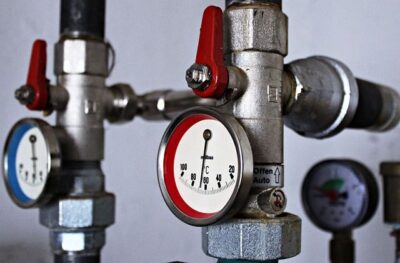Your furnace keeps your home warm during cold months. But sometimes it stops working properly. Understanding why furnaces fail helps you prevent problems and save money. Many homeowners search for furnace repair centennial co when their heating system breaks down. Knowing the right questions to ask can help you get better service.
This guide covers the most common causes of furnace failure and what you should know about keeping your system running smoothly.
Getting professional furnace repair centennial co services at the first sign of trouble can prevent bigger issues later.
How Old Is My Furnace?
Age plays a big role in furnace performance. Most furnaces last between 15 and 20 years. After 15 years, your system needs more repairs. Parts wear out over time. The heat exchanger develops cracks. The blower motor weakens. Older furnaces also use more energy. They cost more to run than new models. According to the Department of Energy, replacing an old furnace can reduce heating bills by up to 20 percent.
Check the manufacture date on your furnace.
You can find it on a metal plate inside the unit. If your furnace is over 15 years old, start planning for a replacement. Frequent repairs on old systems cost more than buying a new one.
When Was the Last Time I Changed the Filter?
Dirty filters cause many furnace problems. The filter traps dust, dirt, and pet hair. When it gets clogged, air cannot flow through properly. Your furnace has to work harder to push air through the system. This extra work makes parts wear out faster. It also makes your energy bills go up.
A dirty filter can cause the furnace to overheat.
The system shuts down to protect itself. You might notice your furnace turning on and off frequently. Change your filter every one to three months. Homes with pets need new filters more often. This simple task prevents many expensive repairs.
Is My Thermostat Working Correctly?
Your thermostat controls when the furnace turns on and off. A broken thermostat makes the furnace run too much or not enough. Sometimes the problem is not the furnace at all. The thermostat might have dead batteries. Wires could be loose. The sensor might read the wrong temperature.
Check if your thermostat display looks normal.
Try replacing the batteries first. Make sure the settings are correct. The thermostat should be set to heat mode, not cool. If problems continue, you might need a new thermostat. Modern programmable thermostats help you save energy and keep better control of your comfort.
Does My Furnace Get Regular Maintenance?
Skipping maintenance causes furnaces to fail early. Professional technicians clean important parts during tune ups. They check for gas leaks. They test safety controls. They lubricate moving parts. Without this care, small problems turn into big ones.
The Air Conditioning, Heating, and Refrigeration Institute recommends annual furnace inspections. Fall is the best time for this service. A technician can spot issues before cold weather arrives. Regular maintenance extends furnace life by several years. It also keeps your warranty valid. Most manufacturers require proof of annual service.
Are There Strange Noises Coming From My Furnace?
Unusual sounds mean something is wrong. A healthy furnace runs quietly. Banging noises suggest a delayed ignition problem. Gas builds up and ignites all at once. This can crack the heat exchanger. Squealing sounds point to a worn blower motor belt. Rattling means loose parts or screws.
Pay attention to any new sounds. Write down when you hear them. Tell your repair technician about these noises. They provide important clues about what needs fixing. Never ignore loud or persistent sounds. They warn you about serious problems that need immediate attention.
Is My Energy Bill Higher Than Normal?
Rising heating costs signal furnace trouble. An inefficient furnace uses more gas or electricity to produce the same heat. Compare your current bills to last year. A sudden increase of 15 percent or more suggests a problem. Dirty burners make the furnace run longer. Duct leaks waste heated air. Poor insulation forces the system to work harder.
Track your energy usage each month. Notice patterns and changes. High bills combined with poor heating mean the furnace is struggling. Sometimes fixing the furnace costs less than continuing to pay high energy bills.
Do I See Rust or Cracks on the Furnace?
Physical damage shortens furnace life. Rust forms when moisture gets inside the unit. It weakens metal parts. Cracks in the heat exchanger are very dangerous. They let carbon monoxide leak into your home. This colorless, odorless gas can make you sick or worse.
Look at your furnace carefully during filter changes. Check for rust spots, especially around the base. Look for any cracks or holes in the metal. Water pooling near the furnace indicates a leak. These problems require professional help right away. Never use a furnace with visible damage.
Is the Pilot Light the Right Color?
Gas furnaces have a pilot light or electronic ignition. The flame should burn steady and blue. A yellow or orange flame means incomplete combustion. This produces carbon monoxide. It also means the burners are dirty. They need cleaning to burn gas properly.
Check your pilot light color every few months. A flickering flame suggests a draft problem. The flame should stay lit consistently. If the pilot light keeps going out, the thermocouple might be bad. This small sensor tells the gas valve when to stay open. Replacing it fixes many ignition problems.
Conclusion
Your furnace needs attention to work properly for many years. Ask these important questions regularly. They help you catch problems early. Small repairs cost much less than emergency breakdowns or full replacements.
Change filters often, schedule annual maintenance, and watch for warning signs. Your furnace will reward you with reliable warmth and lower energy bills. Taking care of your heating system protects your comfort and your wallet.
View the original article and our Inspiration here


Leave a Reply